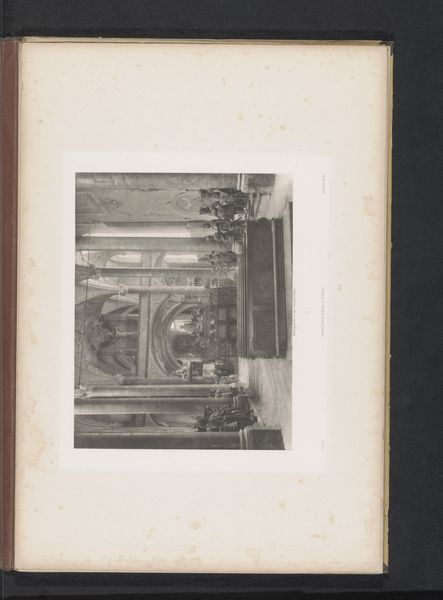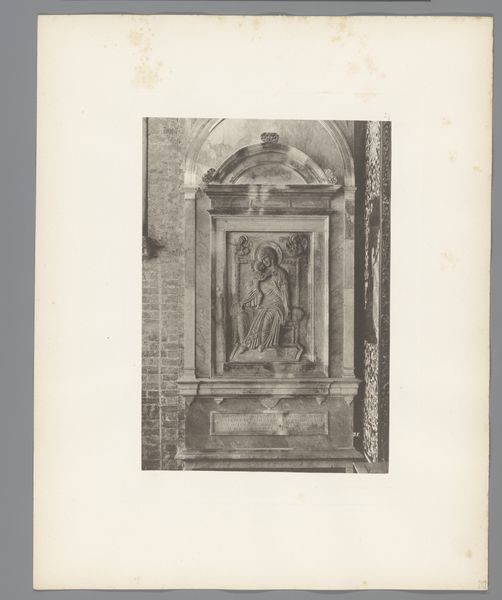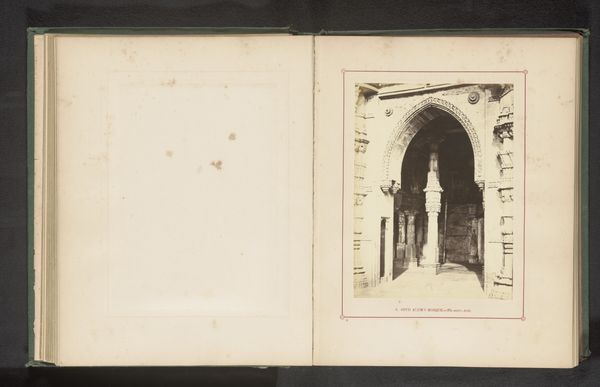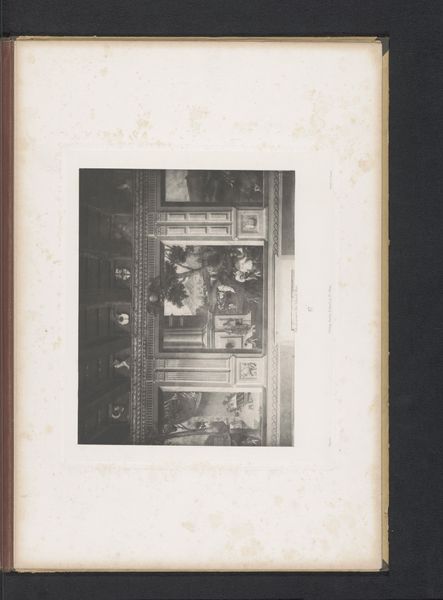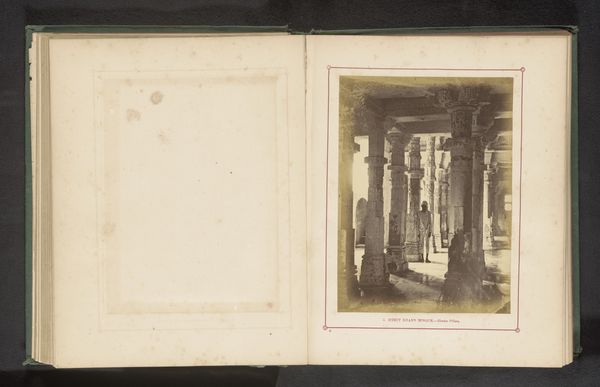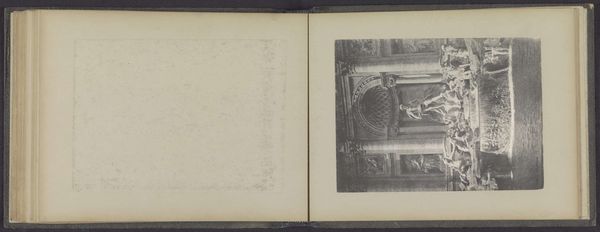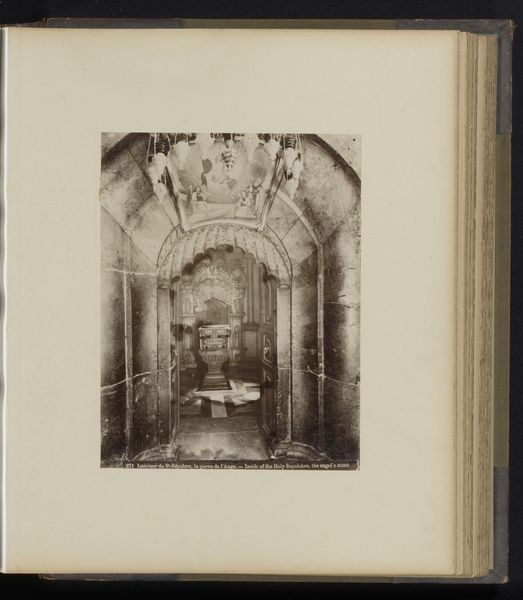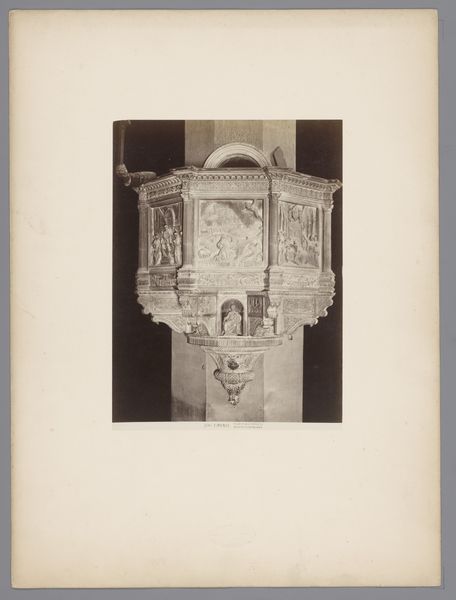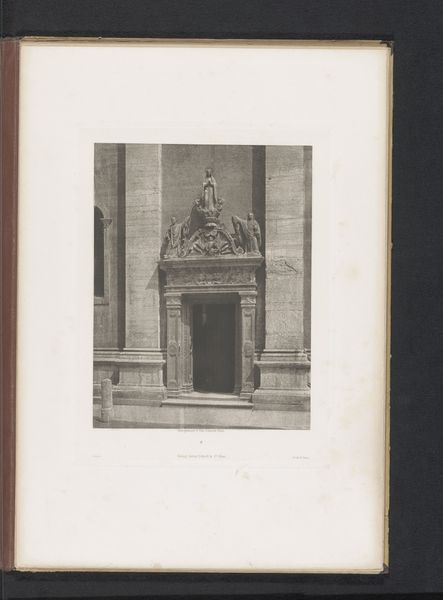
Deurpost gedecoreerd met Romaanse reliëfs in Schloss Tirol in Merano, Italië before 1893
0:00
0:00
carving, photography, sculpture, gelatin-silver-print
#
aged paper
#
toned paper
#
homemade paper
#
pale palette
#
medieval
#
carving
#
reduced colour palette
#
muted colour palette
#
landscape
#
white palette
#
paper texture
#
photography
#
romanesque
#
nude colour palette
#
sculpture
#
folded paper
#
gelatin-silver-print
Dimensions: height 241 mm, width 195 mm
Copyright: Rijks Museum: Open Domain
Curator: Let’s examine this intriguing photograph titled "Deurpost gedecoreerd met Romaanse reliëfs in Schloss Tirol in Merano, Italië," or “Doorpost decorated with Romanesque reliefs in Tirol Castle in Merano, Italy,” captured by Otto Schmidt before 1893 using the gelatin silver process. Editor: There’s a quiet dignity to this image. It evokes a feeling of solemnity and almost invites contemplation of what lies beyond that stone doorway. Curator: Indeed. Romanesque portals served as symbolic thresholds, mediating between the sacred and the secular realms. The sculpted reliefs were not mere decoration but potent visual narratives aimed at conveying religious truths and moral lessons to a largely illiterate populace. Notice how the animal figures are used on the doorway and around the arches? They may stand for sin, virtue, and are guardians of the church as a protector. Editor: I’m particularly drawn to the texture, and its origins in material production. Looking at it through the lens of a gelatin silver print, the image’s creation demanded skilled labor—the careful coating and handling of light-sensitive emulsion, the precision in capturing the carving… Each stage involves physical manipulation, making the final product more than just representation; it's also the record of an industrial act. Curator: And even as that act distances itself, through the act of mechanical reproduction via photography, the symbols are not made mute. Take, for instance, the use of perspective, guiding the viewer's eye deeper into the picture, perhaps implying spiritual ascension. The figures above the arch, seemingly floating, reinforce that otherworldly dimension that medieval artisans sought to create. Editor: You can see how the aged paper adds a kind of narrative itself. We might have to study Schmidt’s social and cultural background to really untangle the complex web of art making that results in a Romanesque monument. It takes time and expertise to create work with the material, both back then and during the age of photography. Curator: Reflecting upon this image, I am left thinking about the enduring power of symbols to transcend time and communicate universal themes about faith, morality, and the human condition. Editor: Considering its making emphasizes the significance of both physical craftsmanship and image making to connect viewers with works. Both, ultimately, come from creative worlds.
Comments
No comments
Be the first to comment and join the conversation on the ultimate creative platform.
